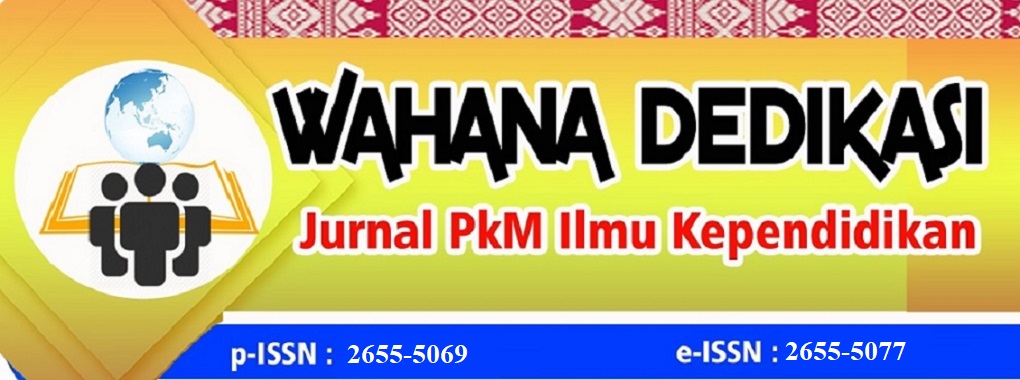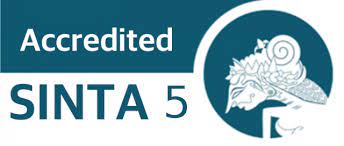Pojok Baca Gen Cerdas: Membangun Generasi Cerdas Literasi dan Numerasi di SD Negeri 010 Kelurahan Tahtul Yaman Kecamatan Pelayangan Kota Jambi
DOI:
https://doi.org/10.31851/wdk.v7i2.17143Abstract
This study aims to develop and implement the Pojok Baca (Reading Corner) program as an effort to enhance literacy and numeracy skills at SD Negeri 010, Tahtul Yaman Village, Pelayangan District, Jambi City. Based on initial observations conducted on March 27, 2024, several challenges were identified in student literacy and numeracy, such as low reading interest, limited library facilities, and a lack of support from parents and the community. To address these issues, Pojok Baca was designed in each classroom, providing books appropriate to the students' age levels. The implementation involved students, teachers, and parents in an interactive literacy process, utilizing games and songs to boost reading interest. Evaluation revealed that the program successfully increased students' reading interest and positively contributed to their literacy and numeracy skills. The program's success was supported by regular evaluations that provided feedback for further improvements and development. Thus, Pojok Baca has the potential to become an effective tool for fostering a literate and numerate generation in elementary schools.
References
Anil, Hakim, Syofra., Naimah, Ahmad., Tri, Oktari., Nadila, Azhari. (2023). 3. Pemberdayaan Masyarakat Untuk Mewujudkan SDGS Pendidikan Desa Berkualitas Melalui Smart Desa Literasi Air Genting. doi: 10.33330/jurdimas.v6i4.2875
Bar, L., & Shaul, S. (2021). Early numeracy and literacy skills among monolingual and bilingual kindergarten children. *Frontiers in Psychology, 12*. https://doi.org/10.3389/fpsyg.2021.732569
Chris, White. (2023). 5. Social practices of smart reading house to improve reading literacy in kranji village, kedungwuni sub-district, pekalongan regency. doi: 10.31219/osf.io/ekqsr
Darwanto, D., & Putri, A. M. (2021). Penguatan literasi, numerasi, dan adaptasi teknologi pada pembelajaran di sekolah: Sebuah upaya menghadapi era digital dan disrupsi. Eksponen, 11(2), 25-35. https://doi.org/10.47637/eksponen.v11i2.381
Dewi, Sutria. (2023). 2. Penerapan Model Pembelajaran Cooperatif Integrated Reading And Compotion Meningkatkan Aktifitas dan Hasil Belajar Memahami Teks Panjang Siswa Kelas III SD Negeri 47 Kota Jambi. Pesona Dasar: Jurnal Pendidikan Dasar dan Humaniora, doi: 10.24815/pear.v11i2.31589
Dulay, K., Cheung, S., Reyes, P., & McBride, C. (2019). Effects of parent coaching on Filipino children’s numeracy, language, and literacy skills. *Journal of Educational Psychology, 111*, 641–662. https://doi.org/10.1037/edu0000315
Dwi, Cahyadi, Wibowo., P., Anggraini., Tedi, Suryadi., Imanuel, Sairo, Awang. (2022). 4. Penerapan metode smart reading untuk meningkatkan kemampuan membaca di kelas ii sd negeri 13 sungai kawat tahun pelajaran 2021/2022. Jurnal Pendidikan Dasar PerKhasa, doi: 10.31932/jpdp.v8i2.1955
Fevi, Rahmadeni., Anisya, Septiana., Syaripah, Syaripah. (2023). 3. Numeracy Literacy Module Based on Local Culture: Effort to Improve Numeracy Literacy Skill. Al Khawarizmi: jurnal pendidikan dan pembelajaran matematika, doi: 10.22373/jppm.v7i1.17115
Gyta, Krisdiana, Cahyaningrum., Didik, Cahyono. (2024). 1. Application of Literacy and Numeracy in Junior High School Learning. Journal of Education Method and Learning Strategy, doi: 10.59653/jemls.v2i02.812
Kovas, Y., Voronin, I., Kaydalov, A., Malykh, S., Dale, P., & Plomin, R. (2013). Literacy and numeracy are more heritable than intelligence in primary school. *Psychological Science, 24*, 2048-2056. https://doi.org/10.1177/0956797613486982
Murtafiah., Fauziah, Hakim., Dewi, Sartika. (2024). 2. Penguatan literasi numerasi melalui workshop pengenalan aplikasi aksi di sekolah dasar. Jurnal Abdi Nusa, doi: 10.52005/abdinusa.v4i2.252
Piper, B., Zuilkowski, S., Dubeck, M., Jepkemei, E., & King, S. (2018). Identifying the essential ingredients to literacy and numeracy improvement: Teacher professional development and coaching, student textbooks, and structured teachers’ guides. *World Development*. https://doi.org/10.1016/J.WORLDDEV.2018.01.018
Purpura, D., & Napoli, A. (2015). Early numeracy and literacy: Untangling the relation between specific components. *Mathematical Thinking and Learning, 17*, 197-218. https://doi.org/10.1080/10986065.2015.1016817
Purpura, D., Hume, L., Sims, D., & Lonigan, C. (2011). Early literacy and early numeracy: The value of including early literacy skills in the prediction of numeracy development. *Journal of Experimental Child Psychology, 110*(4), 647-658. https://doi.org/10.1016/j.jecp.2011.07.004
Rizqi, Dwi, Maharani., Sufyani, Prabawanto. (2022). 4. Students’ numeracy literacy ability viewed by adversity quotient. Nucleation and Atmospheric Aerosols, doi: 10.1063/5.0102478
Rohana, Sufia., Hernita, Pasongli., Iksan, Iksan., Joko, M., Jen. (2023). 1. Improving Student Reading Literacy Through the Thematic Reading Corner Assistance Program at SDN 42 Ternate City. 3Jati emas (Jurnal Aplikasi Teknik dan Pengabdian Masyarakat), doi: 10.36339/je.v7i3.779
Septia, Ayu, Pratiwi., Nur, Robiah, Nofikusumawati, Peni., Anggit, Prabowo. (2024). 5. Study on literacy numeracy towards students’ logic mathematics: a literature review. Numeracy, doi: 10.46244/numeracy.v11i1.2601
Silitonga, H., Manalu, S., Manalu, S., Tarihoran, T., Lumbangaol, M., Sianipar, D., & Siahaan, I. (2023). Penerapan literasi dan numerasi melalui kegiatan pojok baca di SD Negeri 104241 Syahmad. Jurnal Pendidikan Tambusai, 7(1), 73-78.
Skwarchuk, S., Sowinski, C., & LeFevre, J. (2014). Formal and informal home learning activities in relation to children's early numeracy and literacy skills: The development of a home numeracy model. *Journal of Experimental Child Psychology, 121*, 63-84.
Downloads
Published
Issue
Section
License
Copyright (c) 2024 Rully Rully Andi Yaksa, Muhammad Zulfikar, Berru Amalianita, Utami Niki Kusaini, Heri Usmanto

This work is licensed under a Creative Commons Attribution 4.0 International License.
Authors who publish this journal agree to the following conditions:The author has the copyright and entitles the journal to the first publication with works that are licensed simultaneously under the Creative Commons Attribution CC BY License which allows others to share their work with the recognition of the authorship of the work and initial publications in this journal.
Â
The author can make separate additional contract agreements for the non-exclusive distribution of published journal versions of the work (for example, posting them to the institutional repository or publishing them in a book), with recognition of the initial publication in this journal.
Â
Authors are permitted and encouraged to post their work online (e.g., in institutional repositories or on their websites) before and during the delivery process because it can lead to productive exchanges, as well as quotes that are earlier and larger than published works





.png)



